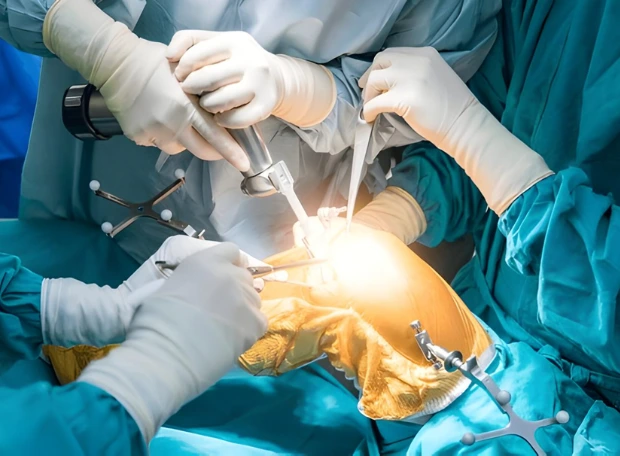
What Is Robotic Joint Replacement Surgery?
Robotic joint replacement surgery is an advanced surgical technique where a robotic system assists the surgeon in performing joint replacement procedures with enhanced precision and accuracy. It is commonly used for replacing damaged or diseased joints such as the knee, hip, shoulder, and elbow.
The procedure involves removing damaged tissues or bone and replacing them with a prosthetic joint. Robotic assistance allows for highly accurate planning, alignment, and placement of implants, tailored to the patient’s unique anatomy.
Orthopedic surgeons use the robotic system to:
- Take measurements
- Plan the surgery
- Guide artificial joint placement
Robotic-assisted surgery allows for the same procedure to be performed using a robotic arm controlled by the surgeon. This technique enhances precision and accuracy by utilizing advanced technology. During the process, a CT scan (typically taken several weeks prior to surgery) is used to produce a three-dimensional model of the affected joint.
The model is then employed to digitally plan the surgery based on the patient’s individual anatomy, ensuring that the surgeon can perform the procedure with enhanced precision and a better understanding of the joint’s unique structure. By guiding the surgical process, robotic-assisted surgery reduces errors, improves implant placement, and contributes to a faster recovery.
What Is Robotic Knee Replacement Surgery ?
Robotic knee replacement is an advanced version of total knee replacement surgery, utilizing the latest technologies to enhance precision. In this procedure, the surgeon removes damaged tissue from the knee and replaces it with an artificial joint, assisted by robotic technology.
The process begins with pre-surgical planning, where a CT scan creates a 3D model of the knee, helping the surgeon evaluate bone structure, joint alignment, and the severity of damage. During the surgery, the surgeon uses the robotic arm for precise tissue removal and implant placement, minimizing errors and improving alignment, which results in better outcomes and faster recovery.
Dr. Sanjeev Patnaik is the best robotic knee replacement surgeon in Bhubaneswar, specializing in robotic total knee replacement surgery with advanced MISSO technology.
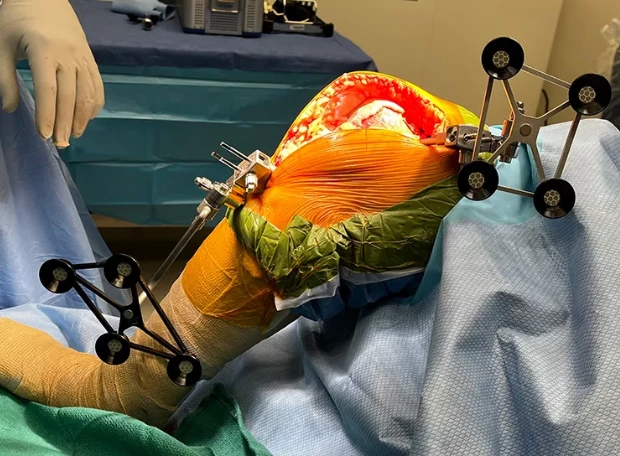
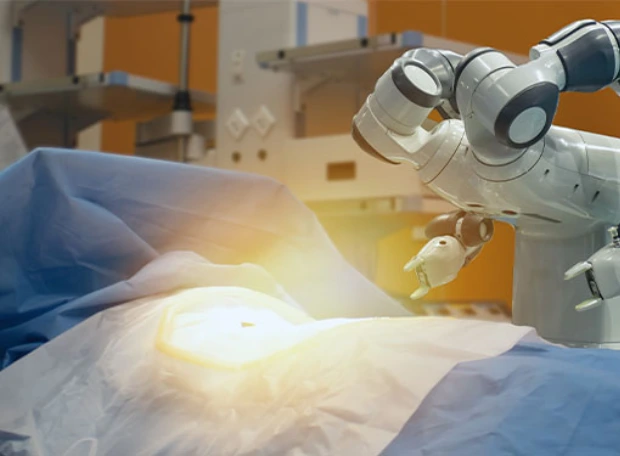
What Is Robotic Hip Replacement Surgery?
Robotic Hip Replacement is an advanced surgical technique where a robotic system assists the surgeon in performing hip replacement surgery with enhanced precision. During the procedure, the surgeon removes the damaged parts of the hip joint and replaces them with an artificial implant, but with the added advantage of robotic assistance.
The robotic system uses preoperative imaging, such as CT scans, to create a 3D model of the hip joint, which helps the surgeon plan the surgery more accurately. This technology allows for precise positioning of the implant, improving alignment and overall joint stability.
Dr. Sanjeev Patnaik is known for providing the best robotic hip replacement surgery in Bhubaneswar, with safe and effective procedures using MISSO technology.
What Is Robotic Shoulder Replacement Surgery?
Robotic Shoulder Replacement is an innovative surgical approach where a robotic system aids the surgeon in replacing a damaged or diseased shoulder joint with an artificial prosthesis. This technique provides greater precision compared to traditional shoulder replacement methods, ensuring optimal implant placement for enhanced joint function.
The process begins with preoperative imaging, typically using a CT scan to create a 3D model of the shoulder joint. This model helps the surgeon plan the surgery with exact details of the joint’s structure. During the surgery, the robotic system assists the surgeon in accurately positioning the implant, resulting in improved alignment and stability.
Dr. Sanjeev Patnaik is the best robotic shoulder replacement surgeon in Bhubaneswar, utilizing advanced MISSO robotic technology.
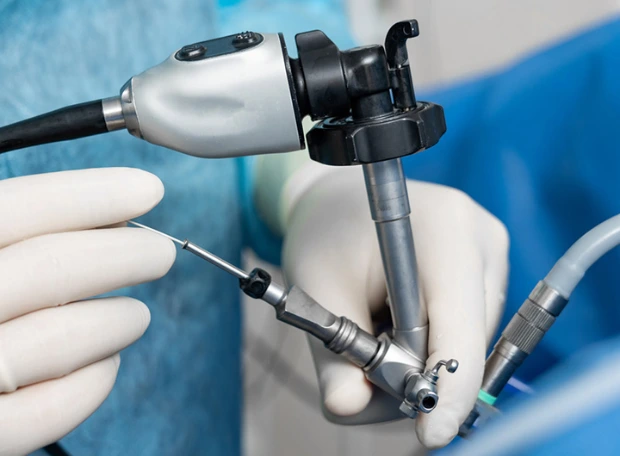
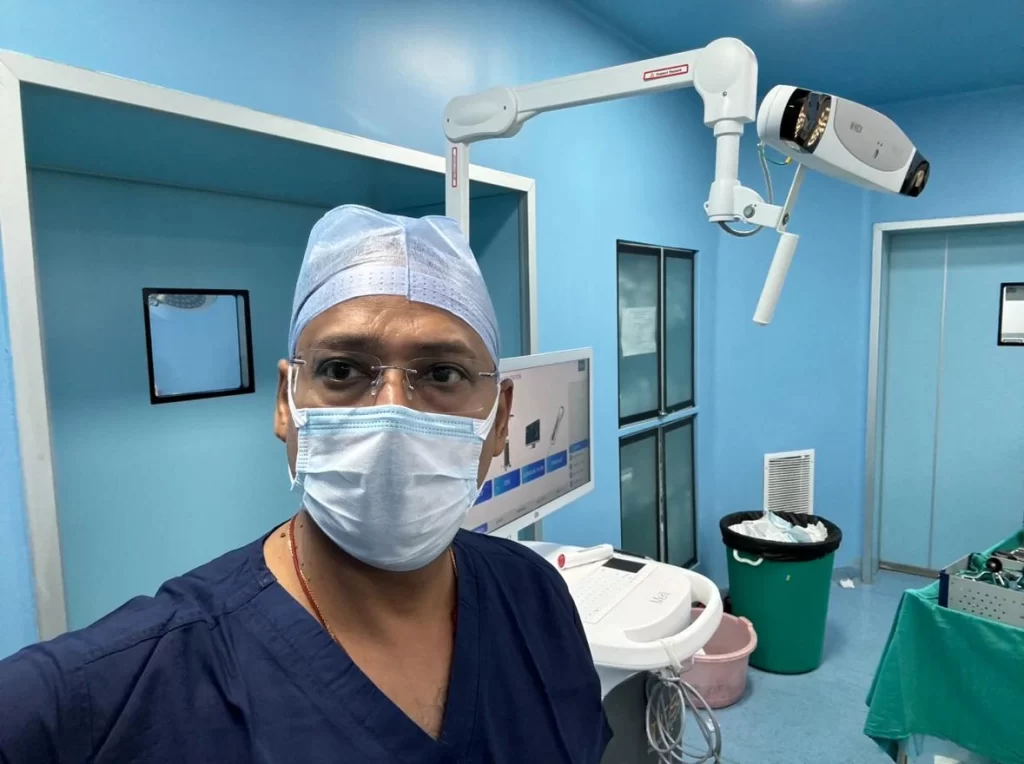
What Is Robotic Elbow Replacement Surgery?
Robotic Elbow Replacement Surgery is an advanced procedure that revolutionizes precision and outcomes in elbow joint replacement. In this cutting-edge technique, a robotic system assists the orthopedic surgeon in removing damaged parts of the elbow joint and replacing them with a highly durable artificial implant.
The use of advanced robotic technology ensures precise alignment, enhances joint stability, minimizes tissue damage, and accelerates recovery, making it the preferred choice for patients seeking effective elbow pain treatment.
If you’re searching for the best orthopedic surgeon in Bhubaneswar or an expert in robotic elbow replacement surgery, Dr. Sanjeev Patnaik effectively alleviates chronic elbow pain.
Advantages Of Robotics Surgery
Robotic-assisted knee replacement surgery offers several key benefits over traditional methods, including:
Enhanced Precision
Robotic-assisted knee surgery enhances precision in implant placement through 3D imaging technology, ensuring optimal knee alignment for improved function and faster recovery.Minimally Invasive
This minimally invasive technique reduces muscle and tissue damage, resulting in less pain, fewer complications, and quicker healing compared to traditional surgery.Customized Surgical Planning
With robotic assistance, the surgeon can create a personalized surgical plan, ensuring the correct implant size and alignment for better outcomes and higher patient satisfaction.
Robotic-assisted hip replacement surgery offers several advantages compared to traditional hip replacement techniques, such as:
Enhanced Pre-Surgical Planning: 3D imaging is used to create a detailed model of your hip joint, helping the surgeon plan the surgery more accurately. This allows for a more personalized approach, ensuring the correct size and placement of the implant.
Increased Precision: The robotic system assists the surgeon in performing the procedure with greater precision, allowing for accurate alignment and positioning of the implant, which improves the overall outcome of the surgery.
Optimized Joint Function and Alignment: With robotic assistance, the hip joint is better aligned, ensuring smoother movement and reducing the risk of complications. The precise placement helps improve the long-term functionality of the joint replacement, promoting a faster recovery and a more natural-feeling joint.
Robotic-assisted shoulder replacement surgery provides several advantages over traditional surgery, including:
Advanced Surgical Planning: Using 3D imaging, a detailed model of the shoulder joint is created, allowing the surgeon to plan the surgery with greater accuracy. This ensures the correct size and placement of the shoulder implant tailored to your unique anatomy.
Increased Precision: The robotic system enhances the surgeon’s ability to remove damaged tissue and position the implant with higher precision, which reduces the risk of errors and complications during surgery.
Improved Joint Function and Alignment: Robotic technology ensures optimal alignment and placement of the shoulder implant, contributing to a more natural-feeling shoulder and better range of motion. This can help patients recover more quickly and experience improved long-term outcomes.
Robotic-assisted elbow replacement surgery offers several advantages over traditional techniques, including:
Precise Surgical Planning: The use of 3D imaging before surgery helps create an accurate model of the elbow joint, allowing the surgeon to plan the procedure with greater detail. This ensures the right implant size and placement, tailored to the patient’s individual anatomy.
Enhanced Accuracy: Robotic technology assists the surgeon in performing the surgery with improved precision, particularly in removing damaged tissue and accurately positioning the elbow implant, reducing the chances of complications.
Better Alignment and Function: Robotic systems help ensure optimal alignment of the elbow joint, leading to better joint function and a more natural range of motion post-surgery. This helps patients recover faster and experience fewer long-term issues with the replaced joint.
Who Can Benefit From Robotic-Assisted Joint Replacement?
Robotic-assisted joint replacement is a groundbreaking solution for patients with advanced joint conditions, including osteoarthritis, rheumatoid arthritis, and other degenerative disorders affecting the knee, hip, shoulder, or elbow. A thorough evaluation by an orthopedic specialist is essential to determine whether robotic-assisted surgery is the best treatment option.
As medical technology continues to advance, robotic-assisted joint replacement is setting new standards for precision and efficiency in surgical care. Ongoing research is making these systems more accessible and cost-effective, paving the way for better patient outcomes and faster recoveries across various joint replacement procedures.

How Do Robotic Joint Replacements Work?
Dr. Sanjeev Patnaik utilizes the revolutionary MISSO (Max Meril) robotic technology in Odisha, transforming joint replacement surgeries with unparalleled precision and personalized care. This fully automated, image-based system enhances surgical accuracy by generating detailed 3D images of the joint and surrounding tissues, allowing for an incredibly customized approach to the surgery.
By using MISSO, Dr. Sanjeev ensures that the implant is perfectly sized and positioned to match the patient’s unique anatomy. This advanced technology not only enhances surgical outcomes but also minimizes errors, shortens recovery times, and increases the overall efficiency of joint replacement procedures. With MISSO, patients in Odisha experience more precise, effective, and quicker joint replacement surgeries.
FAQ'S
Common joint replacement surgeries include:
- Knee replacement.
- Hip replacement.
- Shoulder replacement.
- Elbow replacement.
Knee replacement surgery can be performed using two primary methods: conventional (traditional) knee replacement and robotic-assisted knee replacement. Both procedures aim to treat knee pain and improve function, but they differ in how the surgery is performed and the level of precision involved.
The recovery time after hip surgery varies depending on the type of surgery (e.g., total hip replacement or robotic hip replacement), the patient’s overall health, and adherence to rehabilitation.
Total Knee Replacement (TKR) Surgery, also known as knee arthroplasty, is a surgical procedure where the damaged or worn-out parts of the knee joint are replaced with artificial components, often referred to as a prosthesis. This surgery is typically recommended for individuals suffering from severe knee arthritis or injury that has led to pain, stiffness, and limited mobility.
There will be some pain and discomfort after shoulder replacement surgery, especially in the initial recovery phase. However, Dr. Sanjeev Patnaik will provide medications to help manage pain effectively. Following his instructions carefully, including taking prescribed medications on time and engaging in physical therapy, will play a crucial role in reducing pain and ensuring optimal recovery.
After elbow replacement surgery and successful rehabilitation, most patients are able to resume normal daily activities such as walking, driving, and performing light household tasks. However, certain activities may need to be limited or avoided, especially in the initial recovery phase.
Robot-assisted surgery is a minimally invasive procedure in which a surgeon uses a robotic system to assist in performing surgery. The surgeon controls the robotic instruments through a console, which provides a high-definition 3D view of the surgical site.
The cost of robotic knee replacement surgery in India can range from INR 2,00,000 to INR 4,50,000 per knee. This cost includes the surgical procedure, pre-operative tests, hospital stay, and post-operative care.
You can undergo robotic knee surgery, as well as hip, elbow, and shoulder surgeries, under the expertise of orthopedic and robotic joint replacement surgeon Dr. Sanjeev Patnaik at Phoenix Orthocare, located near Chandrashekharpur, Bhubaneswar, Odisha.Additionally, you can consult Dr. Patnaik at Kalinga Hospital.
